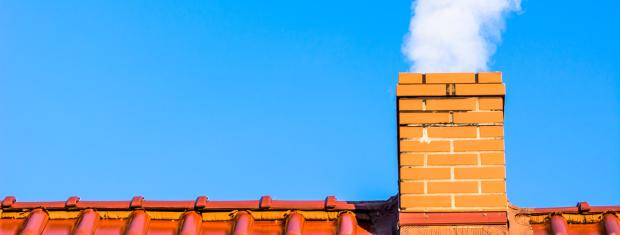
4 Signs of Chimney Fires & How to Prevent Them
Chimney fires can quickly go from bad to worse, so knowing the signs of a chimney fire in progress is crucial for homeowners who utilize wood burning stoves and fireplaces. It is possible to have a chimney fire without even knowing it, so keep a keen eye out for these warning signs of a chimney fire in progress:
- Loud cracking or popping noise of flue tile
- A loud whistling noise
- Unusually dense smoke rising from the chimney
- A hot, burning smell
Most chimney fires are slow-burning and intense due to the heat trapped inside of your chimney. The lack of oxygen inside the chimney prevents a dramatic or visible event. It’s not uncommon to have several chimney fires in one burning season. When these small fires go undetected, the danger increases.
Chimney fires may result in:
- Puffy creosote. Creosote is an extremely flammable byproduct of wood combustion that consists mainly of tar. Creosote can build up and begin to block or greatly restrict your flue, leading to a more severe fire hazard.
- Cracks in your flue tile. Cracks can occur during rapid heating or cooling of your chimney flue tiles. A chimney fire can create heat in excess of 2100°F in a matter of seconds. These cracks can expand from the heat of a normal fire, causing creosote to build up behind your chimney liner wall.
- Discolored or warped chimney cap. The stainless steel chimney caps will discolor under intense heat, usually presenting a rainbow-like sheen or reflection. A chimney fire can also warp and distort the screen, the weakest part of the chimney cap.
- Black debris on your roof or in your yard. Intense heat in your chimney can create a stronger draft that lifts soot up and out, settling onto your roof or lawn. In some cases, this debris can result in a separate and dangerous fire situation.
- Exterior cracks in the masonry. Thermal cracking, improper chimney construction, or water damage can create cracks in your masonry. One is caused by chimney fires, the other by weather. A professional can tell the difference, and it’s a very important distinction.
Preventing Chimney Fires
- Schedule annual chimney inspections. A thorough chimney cleaning will remove creosote from chimney walls and help to detect any emerging issues.
- ONLY burn dry, properly seasoned firewood. Hardwoods such as maple, oak, ash, birch, and most fruit trees are the best burning woods that will give you a hotter and longer burn time. These woods have the least pitch and sap and are generally cleaner to handle. Softwoods like fir, pine and cedar make more smoke, and therefore more creosote.
- Make sure your chimney is properly lined. A chimney liner protects the chimney liner’s masonry and joints from the heat of the fire. It also protects the chimney from the corrosion that can be inflicted by the acidic flue gases that emanate from the fire. By preventing overheating and corrosion, a chimney liner ensures a longer life for your chimney.
- Ensure you have a chimney cap installed. A chimney cap protects your home from water damage. Without a chimney cap, rain and snow can freely fall down your chimney. All of this moisture will eventually corrode or warp the damper.
- Ensure your chimney gets adequate airflow. Proper airflow helps with efficiency and can also prevent backdraft and fire hazards. Ensure your damper is fully open when your fire is going for optimal airflow.
Having a fireplace is a comforting aspect of your home. As with everything else, it needs proper maintenance and care to operate efficiently in order to keep your family safe. Having a fire escape plan for your home is best practice to ensure everyone makes it out safely in the event of a fire.


